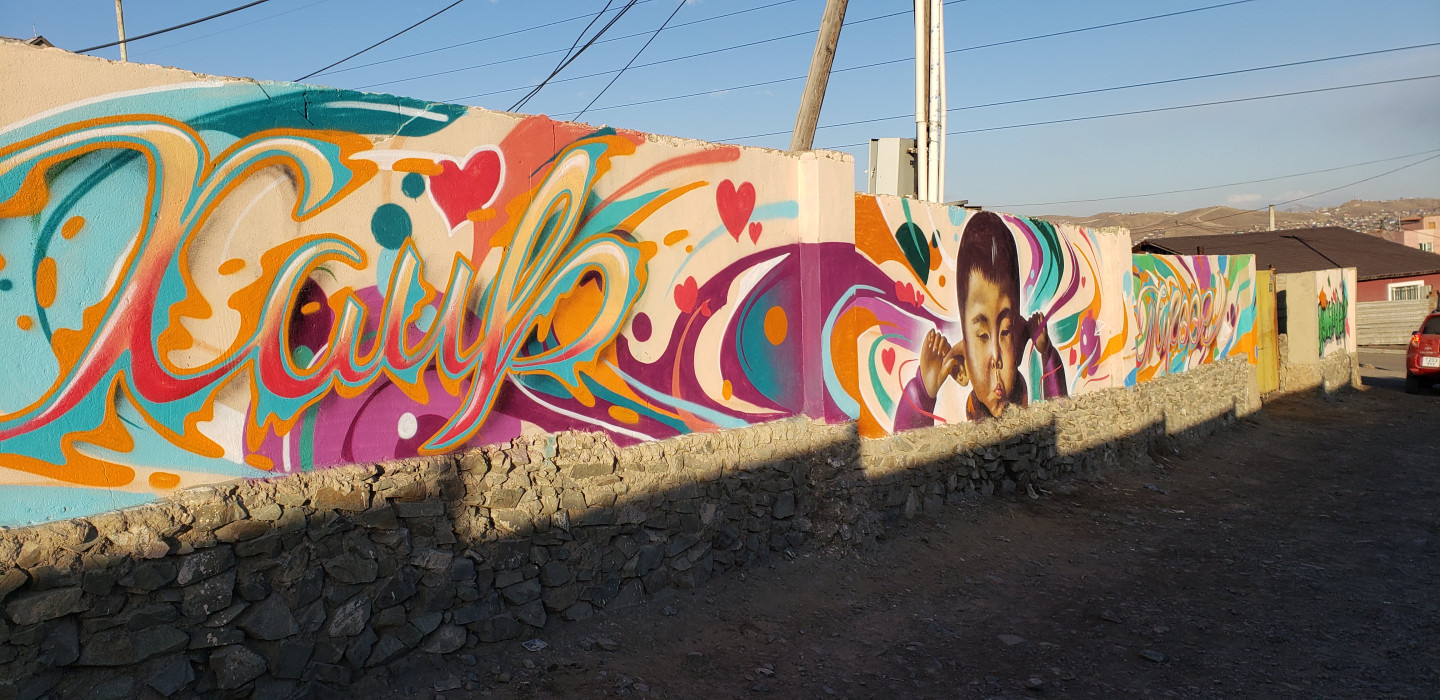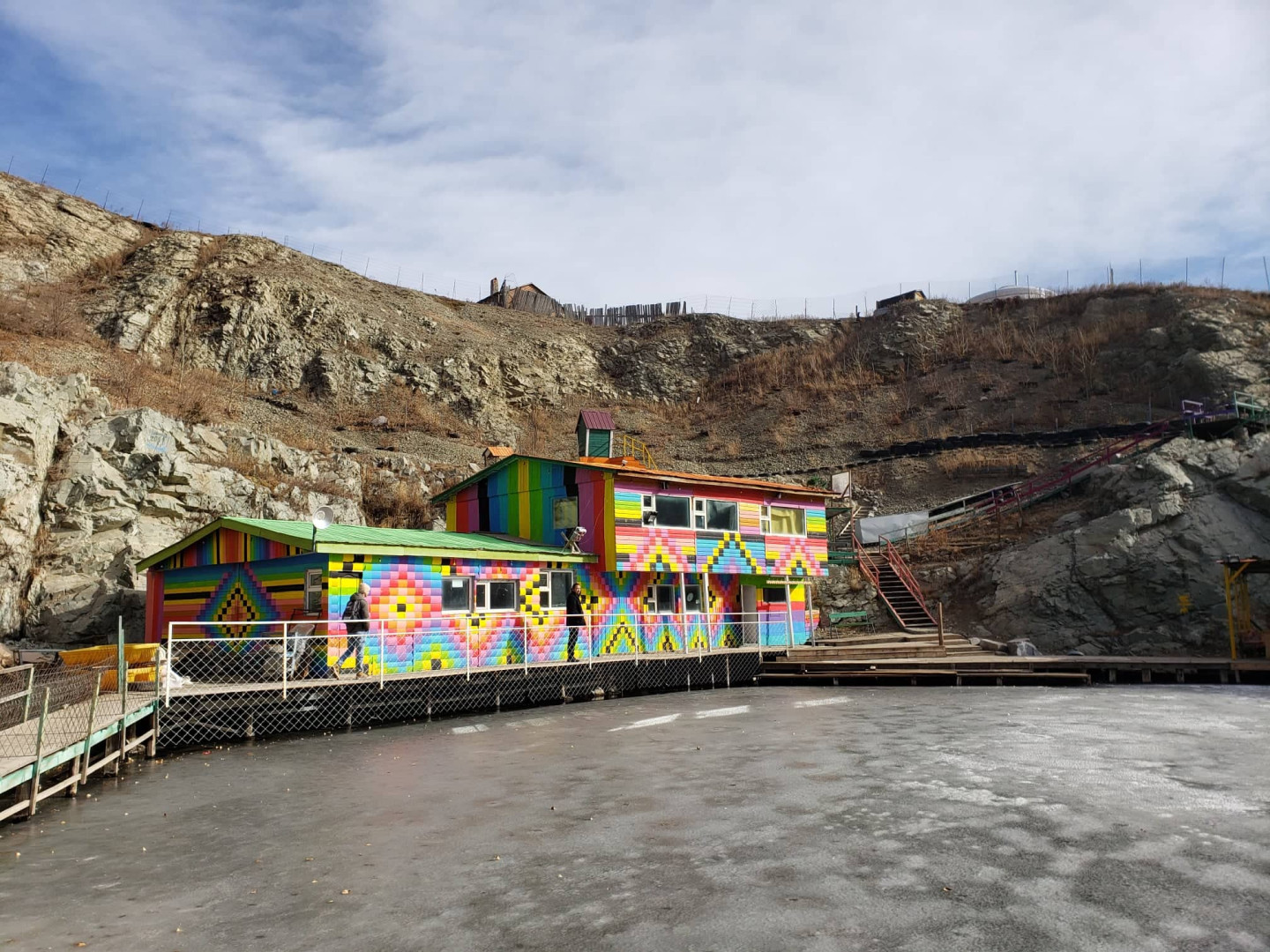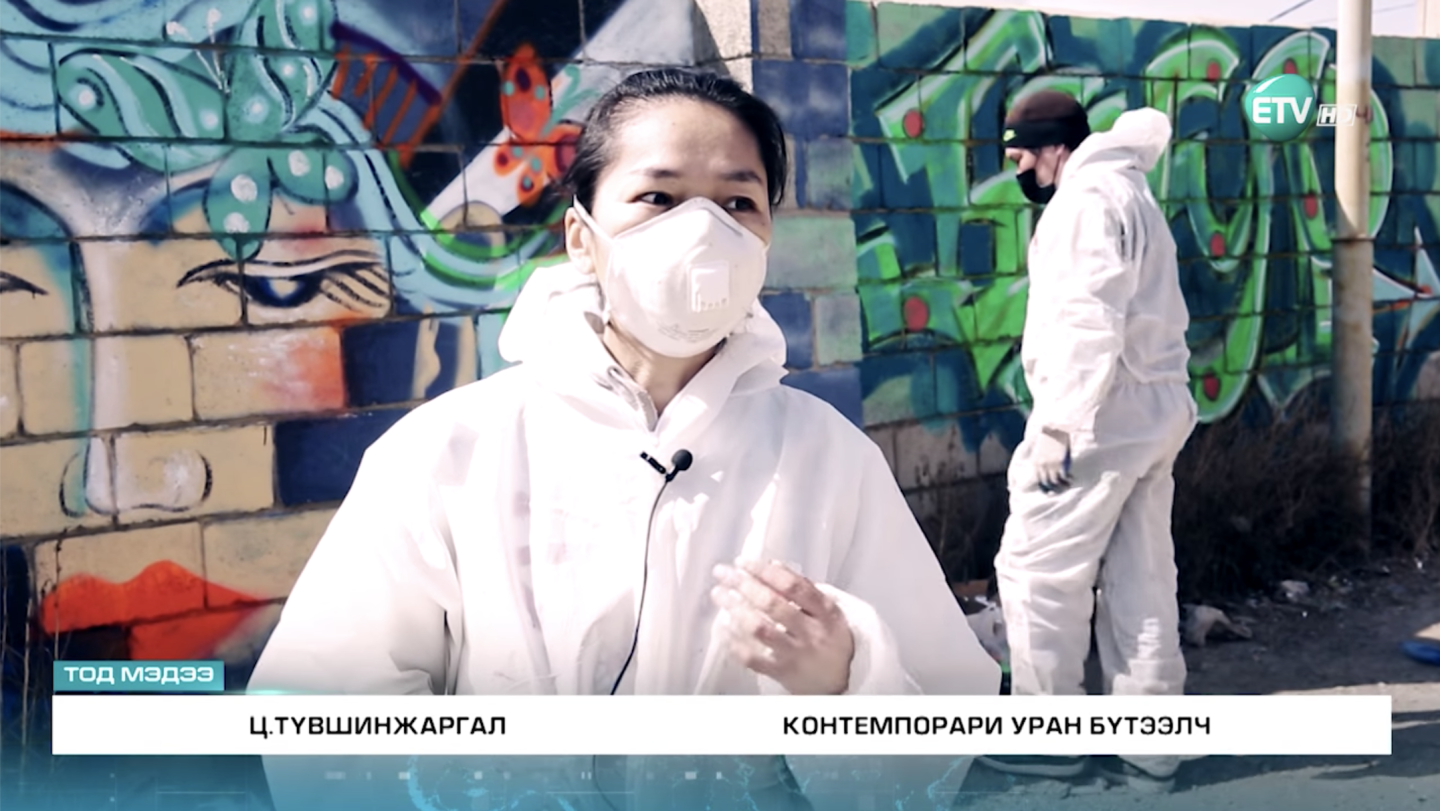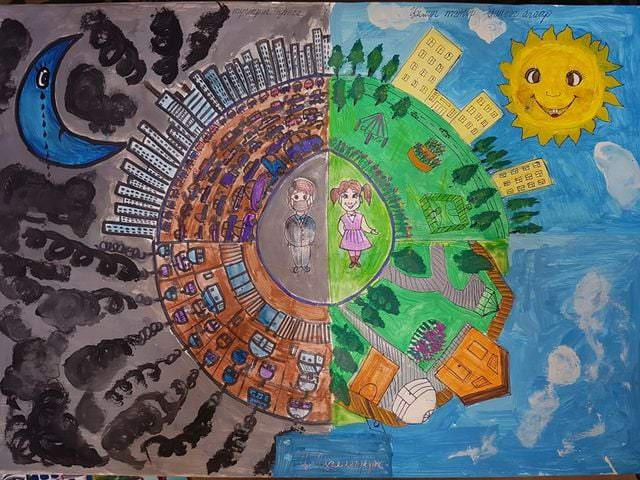Nogoonbaatar International Eco Art Festival, the first of its kind in Mongolia, aims to change the critical situation of air pollution in the Ger District in Ulaanbaatar, notorious for heavy pollution through coal burning.
Half of Mongolia’s population lives in Ulaanbaatar (Mongolian for "Red Hero"), one of the most polluted capital cities on earth. Fine particulate matter accounts for many health disorders and premature deaths, and is a high threat to younger generations. It grows with the expansion of the population and increasing rural-to-urban migration.
Nogoonbaatar ("Green Hero"), the first eco art festival in the country, was organised with the aim to create awareness of the need to change this critical situation. The festival was staged in the Ger District, notorious for heavy pollution through coal burning. Local artists, European artists-in-residence and environmental educators used a people-to-people approach, developing art projects and events in community centres, schools and public spaces.
The main objective of the Nogoonbaatar International Eco Art Festival was to raise awareness of the impacts of air pollution among children, youth and their parents, living in the most polluted areas of Ulaanbaatar city, through organization of workshops, art competitions and public art events with the participation of the local community, European and Mongolian experts and artists. With this, the project is well in line with UN Sustainable Development Goal 13.3: Improve education, awareness raising and human and institutional capacity on climate change mitigation, adaptation, impact reduction and early warning.
The Festival was held under the motto "Nogoonbaatar is Our Future" (translates as “Green Hero is Our Future”) with its long-term objective to prepare Green Heroes, future agents for change.
Research
From September until early November 2020, the curatorial team organized several trips to the Ger districts to understand the attitudes of the local community, logistics, to find potential places and people/community to partner with. Some findings:
- Coal distribution points are quite busy and intriguing places;
- Local residents do not easily collaborate, even some are reluctant, to improve their community;
- Local government, public centres and schools were identified as the best partners;
- Ger Hub Community Centre can collaborate with the festival.
Painting competition for school children "Fresh Air & Blue Sky"
One of the festival’s elements was a painting competition among primary school children to hear their voices on the prevention of air pollution. The twenty best graded paintings were selected, and the pupils will receive a prize. The painting competition gained visibility by placing large prints of some of the children’s works at several public areas of the Ger District and in bus stations. It should also lead to increased motivation among teachers at schools to organize more public awareness campaigns, together with school children, using artistic approaches.
It would be nice if the city where I live is as safe and clean as the countryside.
Participant, "Clean Air - Clear Sky"
Illustration workshop and competition “Talking Pictures - about air pollution”
A 7-day workshop and competition among Art & Design School students on how to develop techniques and ideas to pass their messages on air pollution by creating illustrations on the topic, led by German illustrator Julia Neuhaus. Designers of Mon Sudar Publishing House also attended the workshop.
After attending the 1-week workshop, students created their illustration works to raise awareness on the impacts of the air pollution. Out of 15 contestants, 5 winners were selected by the jury, consisting of professional curators, artists and art critics. Their works were selected and published online and displayed throughout the Ger District.
Public and street art workshops
As a digital residency programme, European (Seth, France and Jitka Kopejtkova and David Strauzz from the Czech Republic) and 18 Mongolian artists explored the local context and co-create public and street art. 12 Mongolian street artists were selected to receive a grant for completing a site-specific art work, creating a 600 meter long mural at NogoonNuur Public Park and Ger Hub community.
I believe that the project is shifting the attitudes of Ulaanbaatar ’s youth in a positive direction on the future and current ecological circumstances.
While creating their works, artists started raising awareness on the impacts of air pollution, aiming to change the public attitudes to be environmentally friendly. During their working process, many residents keep coming to see the artworks and expressing their gratitude Upon completion of the project, Uuliin Nuur Park area has turned into an artistically rich neighborhood, giving an impression to the people walking along the street and the park as if they are visiting a museum. In total 11 sculptures, 21 street artworks and 29 printed works were placed in this area.
Online Public Art Day
Due to Covid-19 related restrictions, the festival organized its Public Art Day online on 1 May 2021 to introduce the results of the festival. The programme included the following activities:
- Online meeting with the contestants of the painting competition among school children, moderated by Gerelsuren from the Arts Council of Mongolia, Bolormaa Algaa, teacher at the Academy of Fine Arts and Altangadas Bayanjargal, Head of the Laboratory Green Crown, outdoor and indoor pollution expert;
- Online meeting with the contestants of the illustration competition among art students, moderated by Jantsankhorol Erdenebayar, teacher at the Academy of Fine Arts and Batzorig Mart, art critic and teacher at Radio, Television and Media Art School;
- Online meeting with Mongolian artists, the participants of the festival, curatorial team and the community of Uuliin Nuur Public Park, moderated by Ariunaa Tserenpil, former Director of the Arts Council of Mongolia and Producer of Guru Media Film.
- Online screening of the documentary on Nogoonbaatar International Eco Art Festival (23 minutes long film - see on the right)
The Online Public Art Day was streamed live through social media channels of all organizers and 3,600 people attended an event. The event reached around 67,000 people in total.
Achievements
As a result of the project Uuliin Nuur Park area was developed into artistic neighborhood, where 11 set of sculptures were created and installed inside of the park and 21 paintings were painted and installed on the streets near the Park. In addition, 29 artworks by children and students were printed, framed and installed on the streets.
I am extremely happy that the project has called to people’s attention to the ecology of where they live.
According to the survey conducted among 20 residents of the Uuliin Nuur Park area, the creation of an artistic neighborhood has deeply affected residents’ attitude in a positive way. Many residents said that they were inspired by the result of the festival and decided to change their passive and careless attitudes towards their living environment and now think of their community wellbeing more seriously. After artists finished creating their works, some of the residents started fixing their fences and outdoor areas. Through social media, newsletters and TV programs, the festival reached around 1,5 million people.
Mayors of neighboring districts came to visit the site and expressed their willingness to implement similar projects. The Mayor of 14th sub-district of Sukhbaatar has already made a decision to turn one of the hidden corners next to their busiest places into an artistically rich place, to reduce violence and pollution in that area. The project also played an important role in strengthening the collaboration between local and EU organizations, artists and local community, by involving over 200 people from different age, backgrounds and nationality.
Nogoonbaatar as European Space of Culture
The project convinced the selection committee with its clearly defined local needs, strongly built partnerships, and well argumented understanding of innovation in relations to the local context. It is important that such a burning issue for Mongolia as ecology is being addressed in a way that is not very known to the local context.
The jury agreed that this project can be seen as one of the models for European Spaces of Culture due to its turn to socially engaged art as an environment for knowledge and advocacy, as well as a platform of mutual learning and exchange between different partners. It is clear that the project is built on a thorough research and understanding between the partners.





